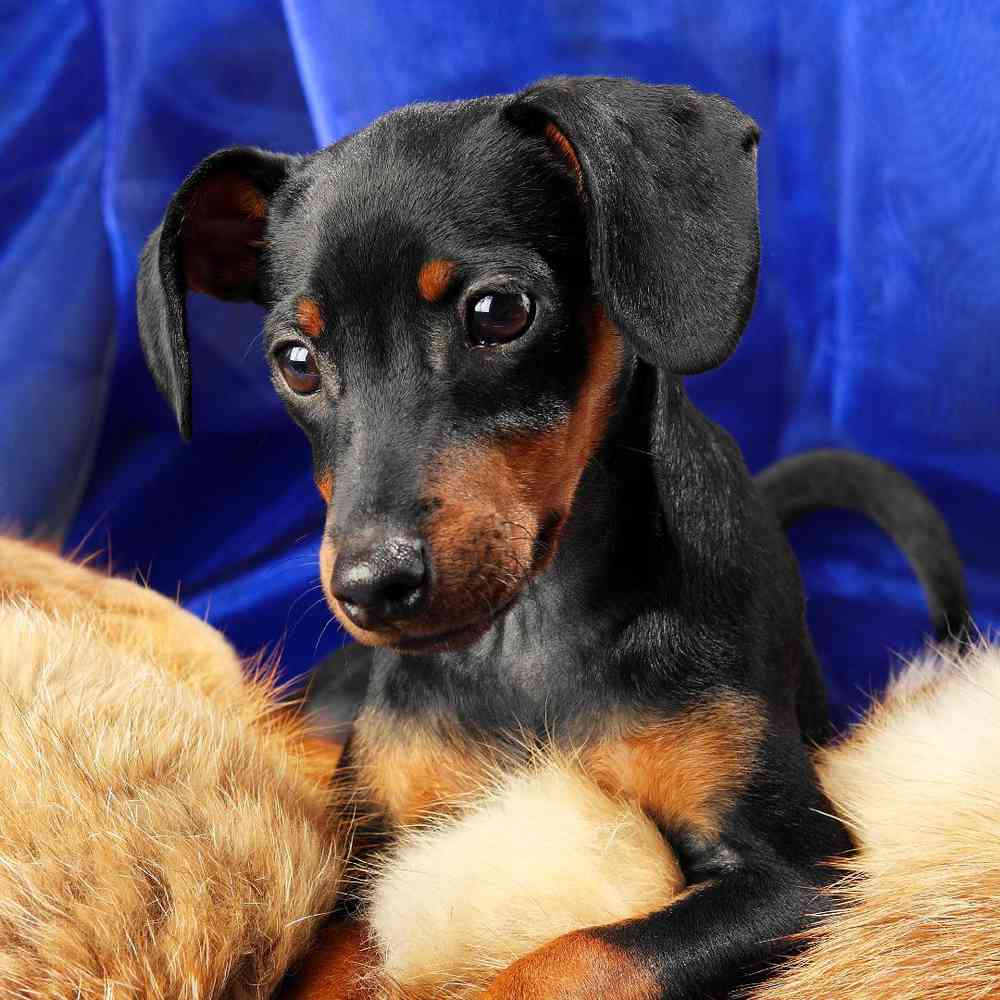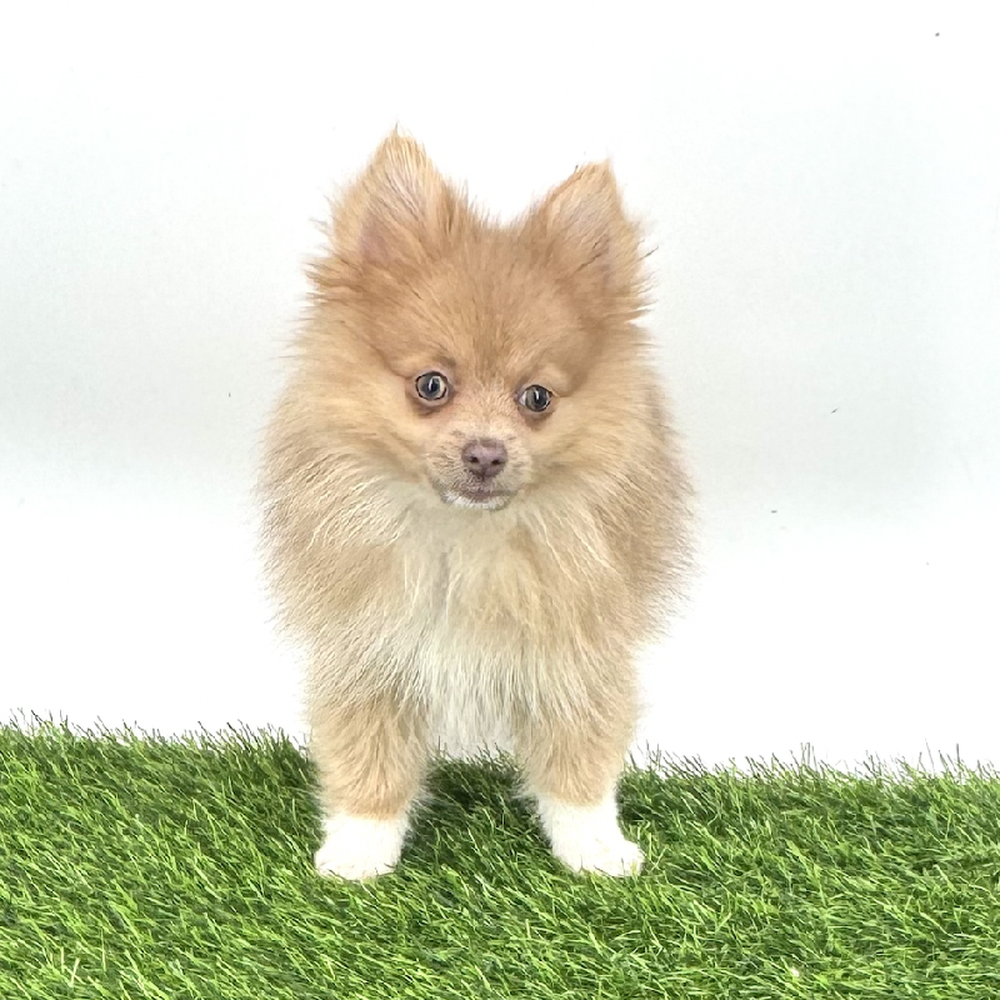Min Pin

Apartment Friendly
AKC Registrable
Min Pin
The leggy Miniature Pinscher is known to fans as the “King of Toys.” This proud, fearless, fun-loving toy breed of lustrous coat and a compact, wedge-shaped physique is a true personality dog, known for a high-stepping “hackney” gait.
Available Puppies
All our Pets have found their homes. Please enter your contact information below so we can get in touch with you when we have found the perfect Pets for your family.
Breed Info
Clubs, Registries & Associations
American Canine Association Continental Kennel Club Universal Kennel Club International American Kennel Club United All Breed Registry America's Pet Registry, Inc. United Kennel Club (Based on breed recognition. See store for details on this particular puppy.)
Group
Toy
Heritage
The Miniature Pinscher was developed from the Dachshund, Italian Greyhound, and the shorthaired German Pinscher. A very old breed, no one knows when the first Miniature Pinchers appeared, but it does predate the Doberman by 200 years, so this breed is not a Miniature Doberman as some like to believe. The original Miniature Pinscher was a working breed, living in the owner’s stables much like a feral cat, and used to control the rodent population in the stables. Some theorize this heritage contributes to the independence of the breed still found today. Today’s Miniature Pinscher's talents are competitive obedience, watchdog, and agility.
Description
Small, up to 10-12” at the shoulders, weighing anywhere from 8-10 pounds. The Miniature Pinscher is small dog in a sturdy body with a short, hard coat in colors of red, red with black, black with rust, and chocolate with tan
Health Awareness
The Miniature Pinscher has a life expectancy of 15 years and is prone to eye problems and epilepsy. They love to ingest foreign objects like paper clips, bottle caps, coin money and kids’ toys. Keep your floor clean or expect one or more trips to the emergency vet with your Miniature Pinscher!
Personality
The Miniature Pinscher is tiny dog in a brave body. They are affectionate, loving, loyal and love to snuggle. They are also very high energy, very independent, and very intelligent. You need to be a calm, knowledgeable, and humane owner giving consistent and committed leadership to your Miniature Pinscher using only motivational training methods. Keep your Miniature Pinscher well exercised with plenty of mental stimulation, or expect destruction in your home. They are escape artists and small; it doesn’t take much of an opening in a fence for your Miniature Pinscher to find a way out. They like to roam and hunt, and will chase most anything that moves. They are good watchdogs and will be protective of their territory and family within it. Be sure to socialize your Miniature Pinscher to prevent guarding behavior that can lead to a bite. They may be a tough little dog, but they are also a wonderful family companion.
Exercise/Energy Level
The Miniature Pinscher is a highly active breed, and requires a daily walk and off-leash play and running in a safe, fenced area. They also need mental stimulation to prevent boredom and destruction, so be sure to provide your Miniature Pinscher with plenty of interactive toys that challenge their problem-solving skills. A bored Miniature Pinscher is a destructive Miniature Pinscher! Also, their coat does not provide warmth in cold weather or cooling in hot weather. Don’t expose your Miniature Pinscher to hot or cold temperatures.
Additional Information
Grooming Requirements: Requires regular brushing and bathing Coat: Short Shedding: Average shedding Hypoallergenic: No, due to shedding Apartment Living: Good for apartment living if given sufficient exercise Lap Dog: Yes Good With Children: Best with older children who understand how to respect this small breed. They do not tolerate roughhousing. Good With Other Pets: Good with other dogs when socialized while a puppy; not trustworthy with non-canine pets
Breed Standard
General Appearance
The Miniature Pinscher is structurally a well balanced, sturdy, compact, short-coupled, smooth-coated dog. He naturally is well groomed, proud, vigorous and alert. Characteristic traits are his hackney-like action, fearless animation, complete self-possession, and his spirited presence.
Head
In correct proportion to the body. Tapering, narrow with well fitted but not too prominent foreface which balances with the skull. No indication of coarseness. Eyes full, slightly oval, clear, bright and dark even to a true black, including eye rims, with the exception of chocolates, whose eye rims should be self-colored. Ears set high, standing erect from base to tip. May be cropped or uncropped. Skull appears flat, tapering forward toward the muzzle. Muzzle strong rather than fine and delicate, and in proportion to the head as a whole. Head well balanced with only a slight drop to the muzzle, which is parallel to the top of the skull. Nose black only, with the exception of chocolates which should have a self-colored nose. Lips and Cheeks small, taut and closely adherent to each other. Teeth meet in a scissors bite.
Neck, Topline, Body
Neck proportioned to head and body, slightly arched, gracefully curved, blending into shoulders, muscular and free from suggestion of dewlap or throatiness. Topline -Back level or slightly sloping toward the rear both when standing and gaiting. Body compact, slightly wedge-shaped, muscular. Forechest well developed. Well-sprung ribs . Depth of brisket, the base line of which is level with points of the elbows. Belly moderately tucked up to denote grace of structural form. Short and strong in loin. Croup level with topline. Tail set high, held erect, docked in proportion to size of dog.
Forequarters
Shoulders clean and sloping with moderate angulation coordinated to permit the hackney-like action. Elbows close to the body. Legs -Strong bone development and small clean joints. As viewed from the front, straight and upstanding. Pasterns strong, perpendicular. Dewclaws should be removed. Feet small, catlike, toes strong, well arched and closely knit with deep pads. Nails thick, blunt.
Hindquarters
Well muscled quarters set wide enough apart to fit into a properly balanced body. As viewed from the rear, the legs are straight and parallel. From the side, well angulated. Thighs well muscled. Stifles well defined. Hocks short, set well apart. Dewclaws should be removed. Feet small, catlike, toes strong, well arched and closely knit with deep pads. Nails thick, blunt.
Coat
Smooth, hard and short, straight and lustrous, closely adhering to and uniformly covering the body.
Color
Solid clear red. Stag red (red with intermingling of black hairs). Black with sharply defined rust-red markings on cheeks, lips, lower jaw, throat, twin spots above eyes and chest, lower half of forelegs, inside of hind legs and vent region, lower portion of hocks and feet. Black pencil stripes on toes. Chocolate with rust-red markings the same as specified for blacks, except brown pencil stripes on toes. In the solid red and stag red a rich vibrant medium to dark shade is preferred. Disqualifications -Any color other than listed. Thumb mark (patch of black hair surrounded by rust on the front of the foreleg between the foot and the wrist; on chocolates, the patch is chocolate hair). White on any part of dog which exceeds one-half inch in its longest dimension.
Gait
The forelegs and hind legs move parallel, with feet turning neither in nor out. The hackney-like action is a high-stepping, reaching, free and easy gait in which the front leg moves straight forward and in front of the body and the foot bends at the wrist. The dog drives smoothly and strongly from the rear. The head and tail are carried high
Temperament
Fearless, Fun-Loving, Proud
Disqualifications
Under 10 inches or over 12½ inches in height. Any color other than listed. Thumb mark (patch of black hair surrounded by rust on the front of the foreleg between the foot and the wrist; on chocolates, the patch is chocolate hair). White on any part of dog which exceeds one-half (½) inch in its longest dimension.
Overview
About
Min Pins are sturdy, compact dogs standing no more than 12.5 inches at the shoulder. The smooth, shiny coat comes in two shades of solid red, or chocolate-and-rust or black-and-rust. The dark, slightly oval eyes and high-set ears help bring out a self-possessed, “big dog” personality. A distinguishing characteristic is the Min Pin’s high-stepping “hackney” gait, reminiscent of a hackney horse at the trot.
History
Experts say Min Pins go back several centuries, but the exact point of origin remains murky. Breed historians accept the idea that Min Pins are a cross of the Dachshund and Italian Greyhound. The German Pinscher is another possible component breed. (Because their names and physical contours are similar, it’s often mistakenly assumed that Min Pins are mini Doberman Pinschers.) Min Pins routinely reside at or near the top of rankings of Europe’s favorite toy dogs. Americans are awfully fond of them too.
Standard
The Miniature Pinscher is structurally a well balanced, sturdy, compact, short-coupled, smooth-coated dog. He naturally is well groomed, proud, vigorous and alert. Characteristic traits are his hackney-like action, fearless animation, complete self-possession, and his spirited presence.
Nutrition
The Miniature Pinscher should do well on a high-quality dog food, whether commercially manufactured or home-prepared with your veterinarian’s supervision and approval. Any diet should be appropriate to the dog’s age (puppy, adult, or senior). Some dogs are prone to getting overweight, so watch your dog’s calorie consumption and weight level. Treats can be an important aid in training, but giving too many can cause obesity. Learn about which human foods are safe for dogs, and which are not. Check with your vet if you have any concerns about your dog’s weight or diet. Clean, fresh water should be available at all times.
Grooming
The Miniature Pinscher’s short, hard coat is very easily maintained. A weekly once-over with a soft brush or a hound glove will keep him shining. With a new puppy, spending time together in grooming sessions helps to accustom him or her to being worked with and is an opportunity to develop the bond between you. The nails should be trimmed regularly, as overly long nails can cause the dog discomfort.
Exercise
The Miniature Pinscher is very active and athletic, and requires ample exercise. A couple of good walks with his human every day will help ensure his optimum mental and physical health. He can enjoy relaxing on the sofa with his owner but will be equally eager to go outside and chase a few tennis balls or run around and play.
Training
Miniature Pinschers are very smart and love their families, but they can also be independent and may try to test their owner’s limits, so obedience training is a good idea. Early socialization and puppy training classes are recommended and help to ensure that the dog grows into a well-adjusted, well-mannered companion.
Health
Miniature Pinschers are generally healthy dogs and responsible breeders test their stock for health conditions such as patellar luxation, cervical (dry) disc, Legg-Calve-Perthes disease, epilepsy, thyroid, heart defects, and eye problems. The MInPin’s teeth should be brushed often, using a toothpaste designed for dogs. Regular visits to the vet for checkups and parasite control help to ensure your dog has a long, healthy life.
Trivia
Did you know?
The Miniature Pinscher is referred to as the "King Of The Toys”






